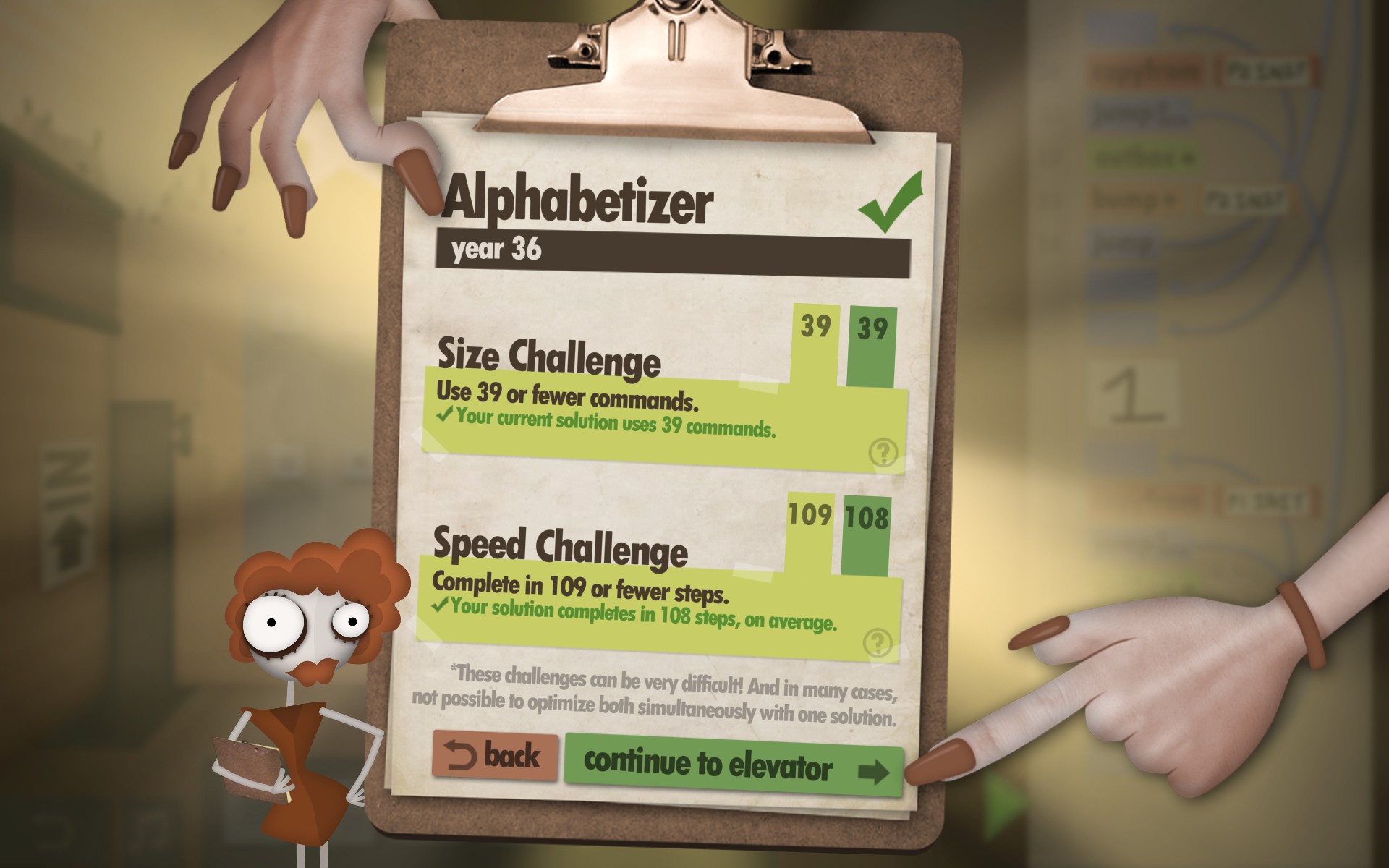

- #Human resource machine ending how to
- #Human resource machine ending plus
- #Human resource machine ending tv
The player is limited in how they can instruct the humans, and the game slowly gives the player more and more instructions with which to write their scripts.
#Human resource machine ending how to
The core of the game, however, is instructing humans how to solve simplistic tasks such as lining up data cubes, writing new data cubes, using printers and shredders and more. In fact, the game does have a good sense of humor, and there are a number of scenes that made me laugh. This is just a simplistic storyline for why humans are following orders from the player and their robot overlords but it works and is a bit humorous. So all 7 billion humans are told to show up for their jobs at a monolithic office building. But humans want “jobs” and as such the robots, including a really obvious but humorous political caricature, gives all the human jobs. Both of those games are unique and interesting concepts, so does 7 Billion Humans live up to that legacy? Let’s take a look.ħ Billion Humans starts by informing the player that robots have taken all their jobs, and it’s the age of the singularity, and we have benevolent robot overlords who make everyone’s lives easier and let them do what they want. If you are a puzzle fan, I would strongly advise you to try this out because it’s highly unlikely that you have played a game like this before.7 Billion Humans is the latest from Tomorrow Corporation, who have developed Human Resource Machine and World of Goo previous to this. In many ways, this game is almost a parallel to the subject matter in hand in that it is easy to learn, but it is very challenging to master. It throws a unique spin on the puzzle genre which many fans will love but also at times grow frustrated at due to the difficulty spike. Human Resource Machine is a really smart game and one that makes you feel like both a mastermind at times and, well, quite the opposite too. It’s certainly not a masterclass in graphical fidelity but it has its own charm and it’s hard not to take a liking to it. In what is now quite emblematic for Tomorrow Corporation, this game also uses a very distinctive visual style that I personally really liked.
#Human resource machine ending plus
Of course, this version has the added benefit of taking it anywhere with you and for this type of game that is a real plus point.
#Human resource machine ending tv
You can also use the motion sensor when playing on the TV or Tabletop Mode but it just feels really awkward and I would personally avoid this way of playing if you can. The best way to play the game is to use the system in Handheld Mode and play using the touch-screen controls, which is how the game was originally played back on Wii U. With this being the Switch version it can be played in a few different ways. You can always try and go back to complete a stage in fewer steps than you did the first time around, but because there isn’t any reward for doing so, it’s quite frankly a pointless task. There are a decent amount of puzzles to get through but once they are done, that is it, there is nothing else to see or do so you can move on to your next game.

If there is one fairly big flaw, it would be the low replay value. All it takes is a bit of getting used to, but that in itself is rather difficult.

Once you do understand how the commands work, you will be able to do wonders with only a handful of commands. New commands get constantly added so after the first few puzzles you will start to come across commands such as ADD which makes additions and SUB which makes subtractions, these are quite straightforward but you end up getting some really complexed commands that you really have to wrap your head around how exactly they work. The UI is very easy to understand and handle. This is a very simple example and the puzzles, of course, get much more difficult and more advanced. All you have to do here is drag INBOX and then OUTBOX to your list and then use JUMP to make it loop around. Your command list would say INBOX, OUTBOX, JUMP. To give a simple example you may have a bunch of number 1’s on your left conveyor belt which is the Inbox and you have to send over all of the number 1’s to Outbox, which is the conveyor belt to your right. The game then gives you a task and you must choose from a group of commands (effectively writing lines of code) to complete said task. For the most part what you will see is a conveyor belt and a bunch of numbers and letters.


 0 kommentar(er)
0 kommentar(er)
